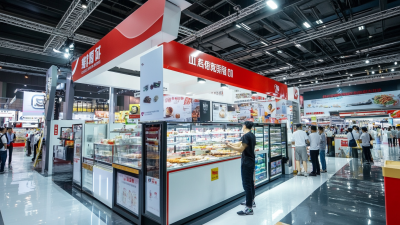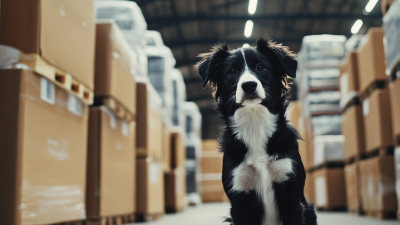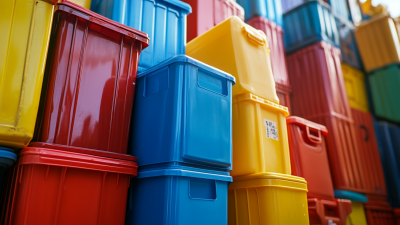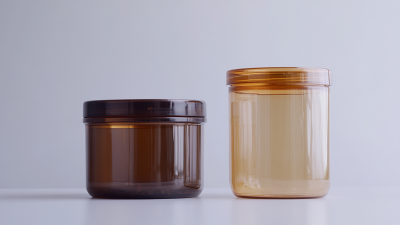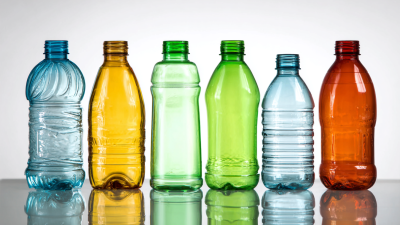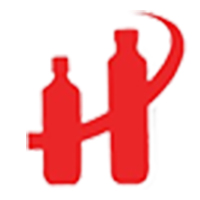In today's fast-paced and competitive market, businesses are constantly seeking ways to differentiate themselves, enhance product appeal, and maintain sustainability. One of the most effective ways to achieve these goals is through innovative rigid packaging solutions. Rigid packaging, known for its sturdiness and ability to preserve product integrity, is not only vital for protecting the contents but also plays a significant role in branding and consumer experience.

As we delve into the realm of packaging, we will explore ten cutting-edge rigid packaging solutions that can elevate your business offerings. From eco-friendly materials to smart packaging technology, these innovations are designed to meet the evolving demands of consumers while ensuring cost efficiency and environmental responsibility.
Whether you're a small startup or an established corporation, adapting to these packaging trends could be the key to staying ahead of the competition.
When considering innovative rigid packaging solutions for your business, it's essential to prioritize product safety. As recent studies have shown, certain materials, such as recycled paper packaging, pose health risks due to the potential release of toxic elements. This highlights the urgency for businesses to adopt rigid packaging options that ensure food contact materials are safe, particularly when dealing with acidic foods. Implementing stringent safety measures and carefully selecting materials can substantially reduce the risk of contamination, thereby safeguarding consumer health.

Furthermore, the growing shift towards sustainability in packaging is influencing consumer preferences. Research indicates that perceptions of packaging materials vary by region, urging companies to tailor their strategies accordingly. For example, the urgency for reusable packaging alternatives for perishable liquid foods is becoming increasingly clear, as consumers demand solutions that prioritize both safety and eco-friendliness. Businesses that focus on these essential features—safe materials, sustainability, and innovative designs—will be well-positioned to meet evolving consumer expectations and enhance their product offerings effectively.
The shift towards sustainable materials in rigid packaging is gaining momentum as businesses respond to growing environmental concerns and consumer preferences. With the global sustainable pharmaceutical packaging market projected to reach USD 343.01 billion by 2034, representing a CAGR of 15.13%, the demand for innovative and eco-friendly packaging solutions is evident. This rising trend is not limited to pharmaceuticals; the food packaging industry is also witnessing changes as companies face pressures from food waste and climate change issues. To address these challenges, there is a push for aligning plastic food packaging strategies with sustainable practices, which includes minimizing resource depletion and improving waste management.
Moreover, advancements in materials such as biobased biodegradable plastics and seaweed-based packaging are paving the way for more responsible packaging solutions across various sectors. As industrial practices evolve, companies are exploring alternative packaging strategies, including life cycle assessment approaches to better manage waste from medical packaging. This commitment to sustainability will not only enhance brand reputation but also cater to the increasing consumer demand for environmentally-friendly products, making it imperative for businesses to consider these innovations in their packaging decisions.
| Solution | Material Type | Sustainability Rating | Primary Use | Market Growth Potential |
|---|---|---|---|---|
| Biodegradable Plastics | PLA, PHA | High | Food & Beverage | 15% CAGR |
| Recycled Cardboard | Kraft Paper | Medium | E-commerce Packaging | 10% CAGR |
| Glass Containers | Soda-lime Glass | High | Personal Care | 8% CAGR |
| Plant-based Composites | Hemp, Bamboo | Very High | Consumer Electronics | 25% CAGR |
| Aluminum Packaging | Aluminum | Medium | Beverages | 5% CAGR |
In today's competitive market, innovative design trends in rigid packaging are pivotal in enhancing consumer engagement and brand loyalty. One key trend is the use of sustainable materials. As consumers become more environmentally conscious, brands that prioritize eco-friendly packaging not only attract attention but also build trust. Utilizing materials that are recyclable or made from renewable resources demonstrates a company's commitment to sustainability and resonates with a growing demographic that values ethical practices.

Another trend shaping the future of rigid packaging is interactivity. Brands are now integrating technology, such as QR codes and augmented reality features, into their packaging designs. This allows consumers to engage with products in a more meaningful way, offering them exclusive content, product information, or promotions through their smartphones. By creating an interactive experience, companies can forge stronger connections with their audience, leading to increased brand affinity and consumer loyalty.
Emphasizing both sustainability and interactivity, businesses can ensure their packaging not only protects products but also captivates and engages consumers effectively.
When selecting rigid packaging solutions for your business, cost-effectiveness is a crucial factor that can greatly influence your bottom line. Businesses often grapple with balancing quality and budget, leading to many exploring innovative options that do not compromise on efficacy. The challenge lies in finding materials that are both durable and affordable, yet still appealing to consumers. Options such as recycled plastics, biodegradable materials, and streamlined designs can lead to reduced manufacturing costs while enhancing sustainability, which is increasingly important to today's eco-conscious buyers.
Moreover, investing in the right rigid packaging solution can significantly boost brand appeal and customer satisfaction. For instance, customized designs that resonate with your brand identity can justify a higher price point, making it a worthy investment. Utilizing advanced manufacturing techniques, such as 3D printing or injection molding, can optimize production efficiency and lower waste, ultimately supporting a healthier profit margin. As you explore these innovative packaging solutions, always consider how they align with your brand goals and your audience's expectations for quality and environmental responsibility.
The landscape of rigid packaging is rapidly evolving, driven by technological advancements that are transforming the way products are packaged and delivered. Insights from industry leaders reveal that innovations such as smart packaging, sustainable materials, and automation are at the forefront of this transformation. Companies are increasingly adopting solutions that not only enhance product protection but also improve consumer engagement through interactive features.
When considering rigid packaging for your business, prioritize sustainability. Opting for eco-friendly materials not only appeals to environmentally conscious consumers but can also reduce overall costs in the long run. Another tip is to explore the use of smart technologies. Incorporating QR codes or NFC chips into your packaging can provide consumers with additional product information, enhancing their overall experience and fostering brand loyalty.
Moreover, leveraging automation in the packaging process can significantly boost efficiency and reduce waste. By investing in automated systems, businesses can streamline their operations and respond more swiftly to market demands. Staying ahead in the rigid packaging sector requires a blend of innovation, sustainability, and efficiency—elements that are critical for thriving in today’s competitive market.
